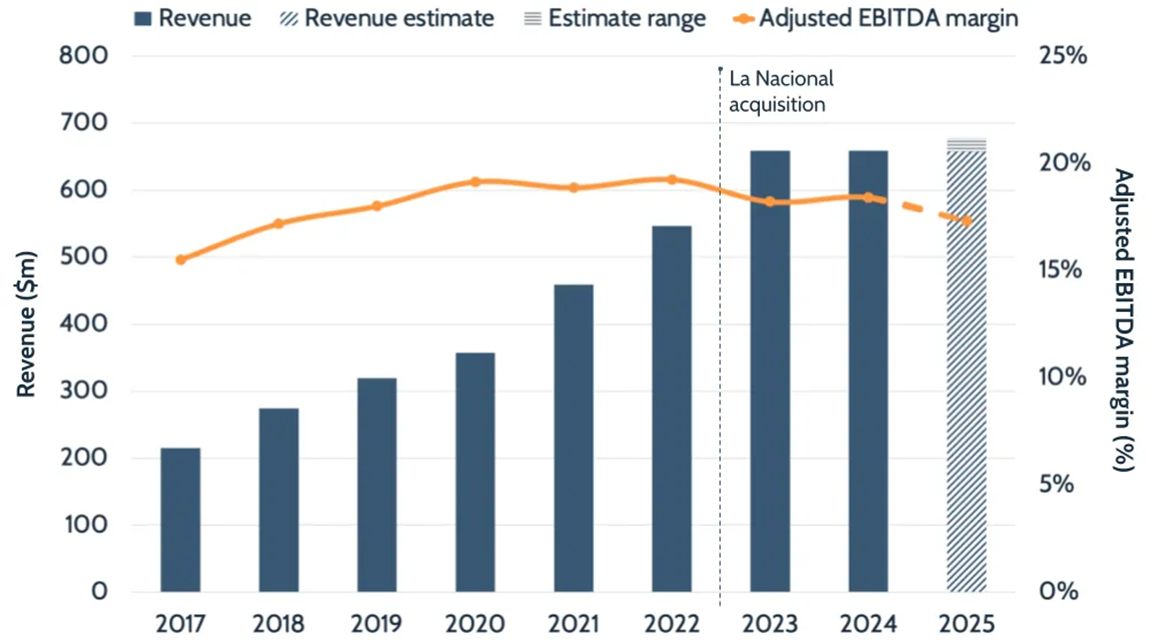Remitly leads its consumer money transfers competitors when it comes to marketing spend. But how are its advertising campaigns having an impact?
Attracting new customers – as well as retaining existing ones – is a critical part of any money transfers business, and vital to this is marketing. From social media to traditional advertising campaigns, marketing is a broad space that provides critical ongoing engagement with customers, reaching them not only on obvious full factors such as promotional pricing, but also on values, such as trust and impact.
For long-established players with strong brand recognition, marketing is a means of building on an often fairly strong existing brand perception, while for others it can mean a partial or even full introduction to a brand. However, not all companies in the money transfers space are spending similar amounts on marketing. Instead, our research shows that one company is significantly outspending its main competitors: Remitly.
In this report, we take a look at how Remitly is outspending other money transfers players, including Western Union, and consider how its most recent campaign is having an impact.
Remitly’s marketing spend versus competitors
Data published in yearly earnings reports shows that Remitly’s marketing spend has been rising significantly over the past few years, climbing particularly sharply in 2023 to bring it beyond its competitors for the year.
This is in comparison to Western Union – which, along with Intermex, specifically reports this metric as advertising spend – and its fairly steady levels of spend over the past few years.
Wise, meanwhile, has also seen a rise, albeit at a much lower growth rate, although the company’s reported numbers also include its spend on marketing for its SME-focused business products, which it has had some campaigns around in recent months. MoneyGram was also seeing an increase between 2020 and 2022, although as it is now private it has not reported numbers for 2023. However, with its sponsorship of the Haas F1 team and related marketing activity, it is likely that it also saw a sharp increase in marketing spend in 2023.
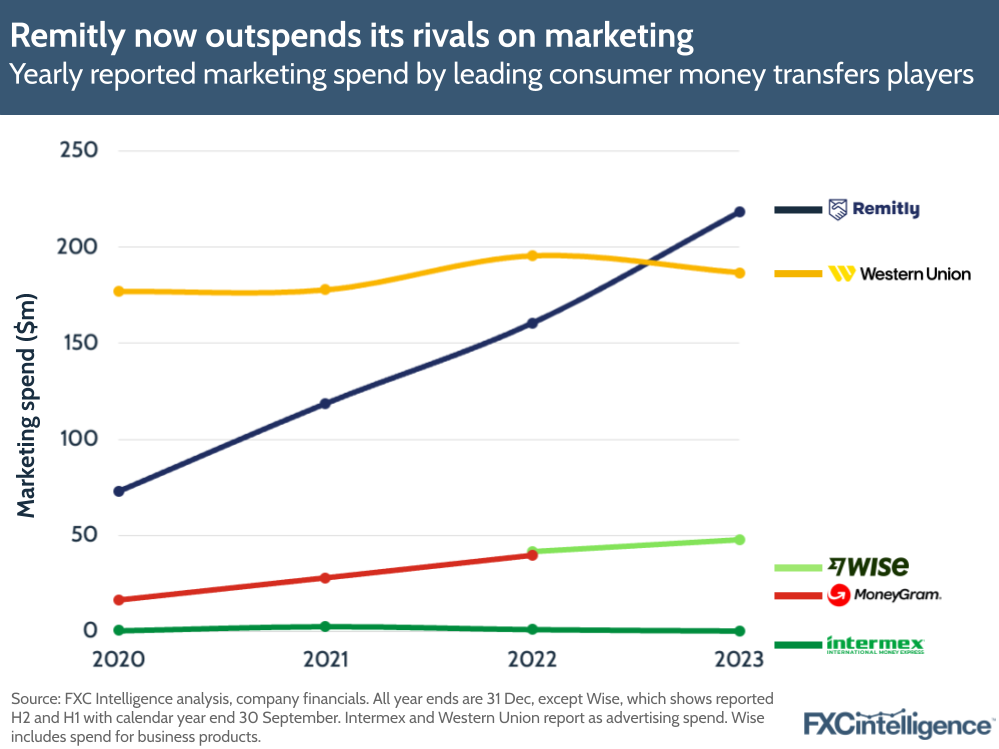
Marketing spend as a share of revenue
When assessed as a share of revenue, Remitly is once again sharply ahead of competitors, with other players’ spending much closer on these terms.
This reflects the importance Remitly places on marketing over some of its competitors, and may be in part due to two notable factors.
Firstly, at 13 years old, Remitly is notably younger than the other players looked at in this report, save for Wise, which is also 13 but focuses on a very different sector, catering to an expat money transfers market rather than Remitly’s migrant remittances customer base. By contrast, Intermex is 30, MoneyGram is 36 and Western Union is 173.
For the latter two, this is likely to have contributed to much stronger baseline brand recognition. YouGov data shows that among US residents, 93% have heard of Western Union, while 68% have heard of MoneyGram, making them the 9th and 38th most recognised financial services brands in the country respectively. Remitly, Intermex and Wise, meanwhile, do not have sufficient brand awareness to be included in YouGov’s tracking.
Secondly, Western Union, MoneyGram and Intermex all have strong retail businesses, which still contribute a significant portion, if not most, of their revenue. As a result, for customers living in areas they service, their logos will be visible in local shops and other locations where their services can be accessed. This will provide passive marketing at no additional cost to the brands, even if the customers that see the logos ultimately only access them via digital platforms.
By contrast, Remitly is digital-only on the send side, meaning that if it wants customers to see its logo in offline environments, it needs to pay for physical advertising space to achieve this.
Rina Hahn, Remitly’s Chief Marketing Officer, tells us that the company views marketing as “a strategic long-term investment”, adding that it “has and continues to generate strong returns over time”.
“We combine a strong digital foundation with point-in-time campaigns in highly relevant geographies to reach customers around the world,” she adds.
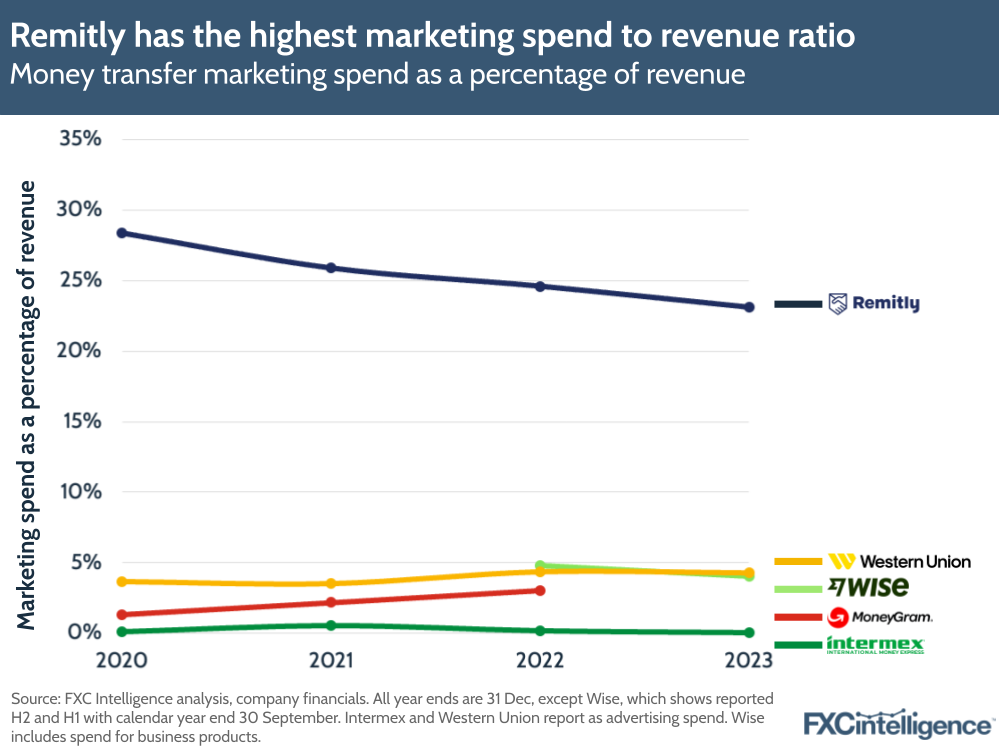
Approaches to customer acquisition
Calculating customer acquisition cost is complex, with Remitly CEO Matt Oppenheimer previously telling us the company typically thinks of this in terms of a five-year lifetime value to new customers, although he added that “most are well beyond five years”.
Beyond this however, he has said that the company focuses its attention on the “middle to the bottom of the funnel”, by breaking out its return across channel, geography or corridor. The company reports a high level of referrals and word of mouth as part of this, but also conducts highly localised campaigns that are designed to connect to the needs and values of specific customer demographics.
Recent examples of this include sponsorships of local sports leagues and the Coach of the Year Award in Miami, Florida; an advertising campaign showcasing people from 20 Latin American countries that aired on major networks in the region; and the launch of a financial literacy hub to help migrants navigate the US financial system.
“We use our deep understanding of the millions of global customers we serve, and combine our authentic, customer-inspired style with a targeted, data-driven approach,” explains Hahn.
“This enables us to localise our communications so they resonate as much as possible and drive the best outcomes for the business.”
Remitly’s Money That Moves Campaign
One of the highest profile examples of this is Remitly’s Money That Moves Campaign, which launched in the UK, Australia, France and Spain in December 2023, and which remains active at present.
It specifically targets communities from South Asia, the Middle East and North Africa, Latin America and Southeast Asia who are living in the countries in question, who represent strong customer bases for Remitly.
The campaign focuses on the positive emotional impact of receiving money transfers, highlighting the personal connection a transfer forges. Each advert focuses on a recipient who is introduced by name and interests before being shown a message from a loved one confirming a transfer has been sent, prompting them to begin dancing.
“Our ‘Money That Moves’ campaign, running across a number of countries, is an example of a marketing initiative where we’re using the universal language of dance to capture the essence of surprise, delight, relief and reassurance experienced by individuals receiving a remittance transfer from a loved one,” explains Hahn.
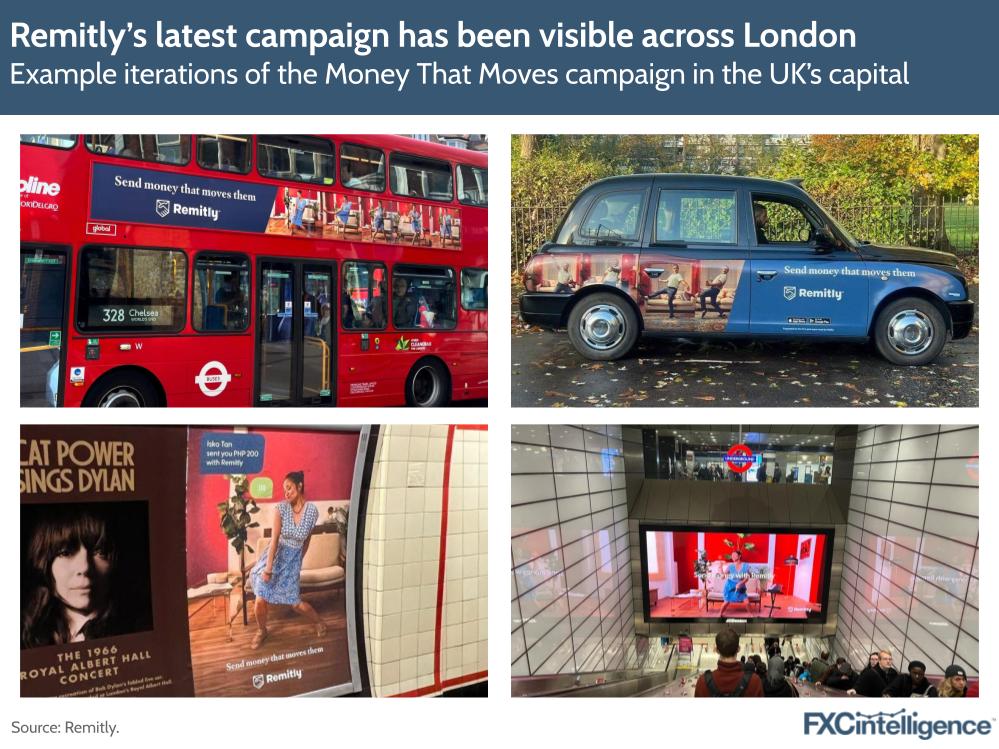
As well as being available online and on social media, the campaign is being broadcast on television and radio, as well as featuring in billboard, metro and other transportation-based advertising.
In London, UK, where much of FXC Intelligence is based, it has been highly visible throughout the city for the last few months, particularly in areas where it is likely to be seen by its target customer base. We have witnessed Remitly adverts from the campaign in areas including Whitechapel station, a popular switching station and area with a large Middle Eastern diaspora; in residential areas in the city’s SE8 postcode district with a significant Southeast Asian population; and in high density in Heathrow Terminal 4, one of the cities busiest airports.
This density also appears to be translating into results. According to data from SEM Rush, organic website traffic originating from the UK to Remitly.com has risen sharply since the campaign began, indicating that more potential customers are logging onto the site than they were prior to the campaign’s launch.
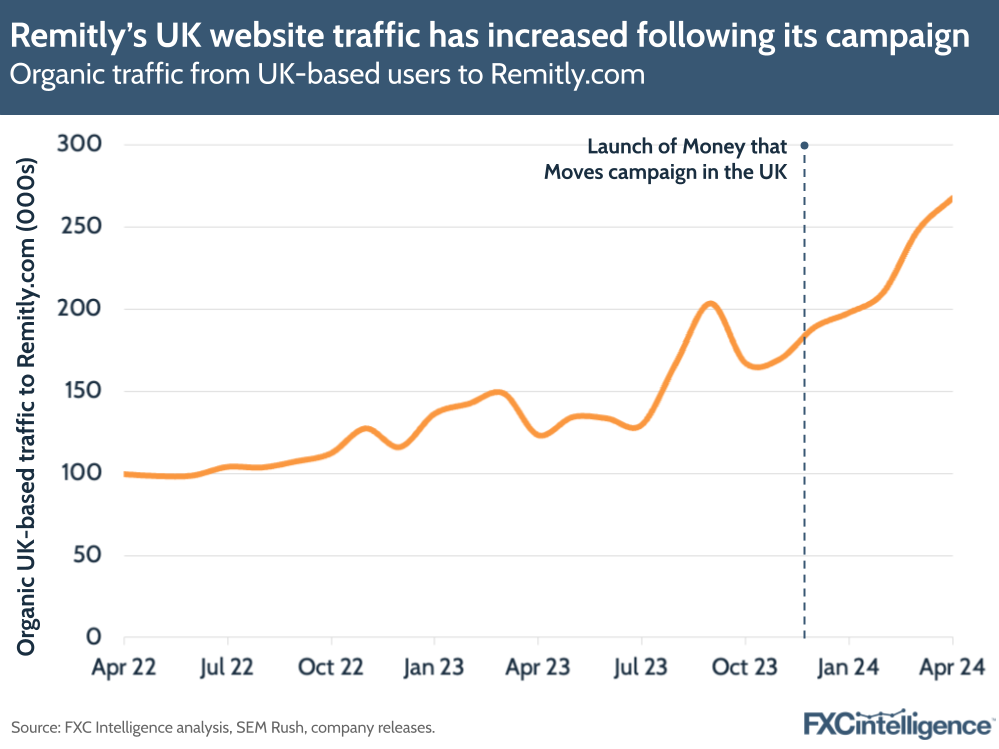
While Remitly has not provided direct numbers on the campaign’s performance so far, Hahn does speak positively about the impact it has had for the company.
“The campaign has demonstrated strong initial performance and is reflective of the high-quality work we do every day to help fuel business momentum,” she says.
“We continue to be hyper-focused on healthy unit economics, including a payback period of less than 12 months, and see evidence that our marketing investments are paying off.”


